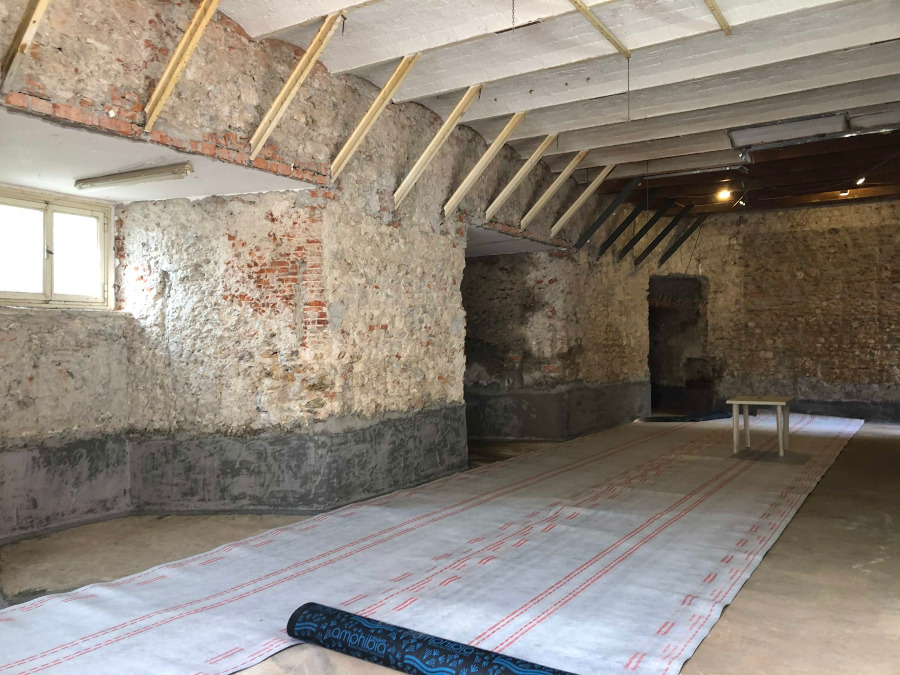
Rising damp is a widespread phenomenon that affects every type of building: residential, commercial and industrial, and it does not matter whether it is old or new.
When there is no insulation against dampness, or when it is poorly constructed or damaged, this is when dampness in masonry appears, caused by capillary rising water from the ground or by the presence of infiltration.
Serious problems that cause deterioration of the masonry itself and the building as a whole, reducing the thermal insulation properties of structures and building materials.
The height it can reach depends on several factors such as the amount of water in the ground, weathering, but not only.
Building materials, in fact, function like a sponge submerged in water and the way and speed of absorption varies depending on the type of material and its porosity, i.e. its absorption capacity.
Moisture, being basically water, gets inside the microscopic vessels in the materials and, exploiting the physical phenomenon of capillarity, rises up along the entire wall.
The level of rising, i.e. the point at which the phenomenon stops or slows down, as well as depending on the variants mentioned above, is linked to the size of the capillaries: the larger their diameter, the more difficult it will be for the damp to rise along the wall, vice versa, in the presence of smaller capillaries, the damp can easily invade the entire wall.

What does it look like?
Rising damp is clearly recognisable by the presence of halos on the walls. At first they appear as darker coloured areas on the wall, which can give rise to salt crystallisation, in higher areas, where the phenomenon slows down or stops.
Due to the stagnation of humidity, which releases the salt present in it, they can have different appearances, ranging from a few centimetres to several metres in extent, not only on the internal but also on the external facades of the building.
The consequence is an obvious degradation of the plasterwork and the wall itself, which can also lead to the formation of mould that should not be underestimated.

Damage caused by rising damp
Rising damp is a problem that should not be overlooked because it can cause, first and foremost, health problems: as humidity evaporates from the walls, it is transmitted to the environment, making the air unhealthy and cold.
A favourable condition for the onset of simple ailments or more serious pathologies in the presence of mould and fungus.
Possible damage is also of a material nature such as:
- aesthetic damage
Perhaps the least damage, as this often consists of simple stains and halos or, in more serious conditions, the appearance of mould, peeling paint and plaster or the formation of salt deposits;
- static damage
The most serious damage to structures caused, not so much by humidity, but by the salts that settle once all the water has evaporated;
- economic damage
Always present, whether minor or major.
An aspect that does not only refer to the costs to be borne for the intervention but also concerns the costs to be borne from an energy point of view.
In fact, a humid environment requires more energy to be heated and thus the increase in temperatures of heating systems.
Should I worry about rising damp?
Rising damp is a great concern in buildings (new and old) because it can lead to various issues, including damage to the structure and potential health hazards. Here are some potential problems arising from rising damp:
- Structural Damage
- Health Concerns (due to the growth of bacteria, fungi, and dust mites). This can lead to indoor air quality issues and may exacerbate respiratory conditions, such as asthma and allergies.
- Heat Loss
- Aesthetic Issues (like staining, discoloration, plaster detachment and the appearance of salt deposits on walls)
- Reduced Property Value
If you suspect rising damp in your property, it’s important to address the issue promptly. Consult with a qualified building professional or a damp specialist to conduct a thorough assessment and recommend appropriate remedial measures.











